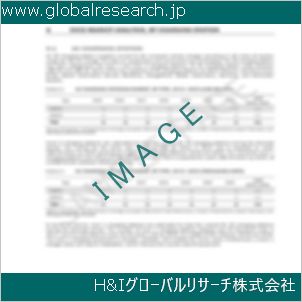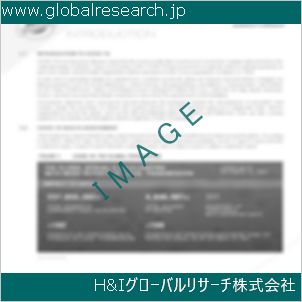Table of Contents
1 Industry Overview of Isoamylbromide
1.1 Definition and Specifications of Isoamylbromide
1.1.1 Definition of Isoamylbromide
1.1.2 Specifications of Isoamylbromide
1.2 Classification of Isoamylbromide
1.3 Applications of Isoamylbromide
1.3.1 Nuclear Application
1.3.2 Non-Nuclear Application
1.4 Industry Chain Structure of Isoamylbromide
1.5 Industry Overview and Major Regions Status of Isoamylbromide
1.5.1 Industry Overview of Isoamylbromide
1.5.2 Global Major Regions Status of Isoamylbromide
1.6 Industry Policy Analysis of Isoamylbromide
1.7 Industry News Analysis of Isoamylbromide
2 Manufacturing Cost Structure Analysis of Isoamylbromide
2.1 Raw Material Suppliers and Price Analysis of Isoamylbromide
2.2 Equipment Suppliers and Price Analysis of Isoamylbromide
2.3 Labor Cost Analysis of Isoamylbromide
2.4 Other Costs Analysis of Isoamylbromide
2.5 Manufacturing Cost Structure Analysis of Isoamylbromide
2.6 Manufacturing Process Analysis of Isoamylbromide
3 Technical Data and Manufacturing Plants Analysis of Isoamylbromide
3.1 Capacity and Commercial Production Date of Global Isoamylbromide Major Manufacturers in 2023
3.2 Manufacturing Plants Distribution of Global Isoamylbromide Major Manufacturers in 2023
3.3 R&D Status and Technology Source of Global Isoamylbromide Major Manufacturers in 2023
3.4 Raw Materials Sources Analysis of Global Isoamylbromide Major Manufacturers in 2023
4 Capacity, Production and Revenue Analysis of Isoamylbromide by Regions, Types and Manufacturers
4.1 Global Capacity, Production and Revenue of Isoamylbromide by Regions 2019-2024
4.2 Global and Major Regions Capacity, Production, Revenue and Growth Rate of Isoamylbromide 2019-2024
4.3 Global Capacity, Production and Revenue of Isoamylbromide by Types 2019-2024
4.4 Global Capacity, Production and Revenue of Isoamylbromide by Manufacturers 2019-2024
5 Price, Cost, Gross and Gross Margin Analysis of Isoamylbromide by Regions, Types and Manufacturers
5.1 Price, Cost, Gross and Gross Margin Analysis of Isoamylbromide by Regions 2019-2024
5.2 Price, Cost, Gross and Gross Margin Analysis of Isoamylbromide by Types 2019-2024
5.3 Price, Cost, Gross and Gross Margin Analysis of Isoamylbromide by Manufacturers 2019-2024
6 Consumption Volume, Consumption Value and Sale Price Analysis of Isoamylbromide by Regions, Types and Applications
6.1 Global Consumption Volume and Consumption Value of Isoamylbromide by Regions 2019-2024
6.2 Global and Major Regions Consumption Volume, Consumption Value and Growth Rate of Isoamylbromide 2019-2024
6.3 Global Consumption Volume and Consumption Value of Isoamylbromide by Types 2019-2024
6.4 Global Consumption Volume and Consumption Value of Isoamylbromide by Applications 2019-2024
6.5 Sale Price of Isoamylbromide by Regions 2019-2024
6.6 Sale Price of Isoamylbromide by Types 2019-2024
6.7 Sale Price of Isoamylbromide by Applications 2019-2024
6.8 Market Share Analysis of Isoamylbromide by Different Sale Price Levels
7 Supply, Import, Export and Consumption Analysis of Isoamylbromide
7.1 Supply, Consumption and Gap of Isoamylbromide 2019-2024
7.2 Global Capacity, Production, Price, Cost, Revenue, Supply, Import, Export and Consumption of Isoamylbromide 2019-2024
7.3 USA Capacity, Production, Price, Cost, Revenue, Supply, Import, Export and Consumption of Isoamylbromide 2019-2024
7.4 EU Capacity, Production, Price, Cost, Revenue, Supply, Import, Export and Consumption of Isoamylbromide 2019-2024
7.5 China Capacity, Production, Price, Cost, Revenue, Supply, Import, Export and Consumption of Isoamylbromide 2019-2024
7.6 Japan Capacity, Production, Price, Cost, Revenue, Supply, Import, Export and Consumption of Isoamylbromide 2019-2024
8 Major Manufacturers Analysis of Isoamylbromide
8.1 Manufacturer One
8.1.1 Company Profile
8.1.2 Product Picture and Specifications
8.1.2.1 Type I
8.1.2.2 Type II
8.1.2.3 Type III
8.1.3 Capacity, Production, Price, Cost, Gross and Revenue
8.1.4 Contact Information
8.2 Manufacturer Two
8.2.1 Company Profile
8.2.2 Product Picture and Specifications
8.2.2.1 Type I
8.2.2.2 Type II
8.2.2.3 Type III
8.2.3 Capacity, Production, Price, Cost, Gross and Revenue
8.2.4 Contact Information
8.3 Manufacturer Three
8.3.1 Company Profile
8.3.2 Product Picture and Specifications
8.3.2.1 Type I
8.3.2.2 Type II
8.3.2.3 Type III
8.3.3 Capacity, Production, Price, Cost, Gross and Revenue
8.3.4 Contact Information
8.4 Manufacturer Four
8.4.1 Company Profile
8.4.2 Product Picture and Specifications
8.4.2.1 Type I
8.4.2.2 Type II
8.4.2.3 Type III
8.4.3 Capacity, Production, Price, Cost, Gross and Revenue
8.4.4 Contact Information
8.5 Manufacturer Five
8.5.1 Company Profile
8.5.2 Product Picture and Specifications
8.5.2.1 Type I
8.5.2.2 Type II
8.5.2.3 Type III
8.5.3 Capacity, Production, Price, Cost, Gross and Revenue
8.5.4 Contact Information
…
9 Marketing Trader or Distributor Analysis of Isoamylbromide
9.1 Marketing Channels Status of Isoamylbromide
9.2 Traders or Distributors with Contact Information of Isoamylbromide by Regions
9.3 Ex-work Price, Channel Price and End Buyer Price Analysis of Isoamylbromide
9.4 Regional Import, Export and Trade Analysis of Isoamylbromide
10 Industry Chain Analysis of Isoamylbromide
10.1 Upstream Major Raw Materials Suppliers Analysis of Isoamylbromide
10.1.1 Major Raw Materials Suppliers with Contact Information Analysis of Isoamylbromide
10.1.2 Major Raw Materials Suppliers with Supply Volume Analysis of Isoamylbromide by Regions
10.2 Upstream Major Equipment Suppliers Analysis of Isoamylbromide
10.2.1 Major Equipment Suppliers with Contact Information Analysis of Isoamylbromide
10.2.2 Major Equipment Suppliers with Product Pictures Analysis of Isoamylbromide by Regions
10.3 Downstream Major Consumers Analysis of Isoamylbromide
10.3.1 Major Consumers with Contact Information Analysis of Isoamylbromide
10.3.2 Major Consumers with Consumption Volume Analysis of Isoamylbromide by Regions
10.4 Supply Chain Relationship Analysis of Isoamylbromide
11 Development Trend of Analysis of Isoamylbromide
11.1 Capacity, Production and Revenue Forecast of Isoamylbromide by Regions and Types
11.1.1 Global Capacity, Production and Revenue of Isoamylbromide by Regions 2024-2029
11.1.2 Global and Major Regions Capacity, Production, Revenue and Growth Rate of Isoamylbromide 2024-2029
11.1.3 Global Capacity, Production and Revenue of Isoamylbromide by Types 2024-2029
11.2 Consumption Volume and Consumption Value Forecast of Isoamylbromide by Regions, Types and Applications
11.2.1 Global Consumption Volume and Consumption Value of Isoamylbromide by Regions 2024-2029
11.2.2 Global and Major Regions Consumption Volume, Consumption Value and Growth Rate of Isoamylbromide 2024-2029
11.2.3 Global Consumption Volume and Consumption Value of Isoamylbromide by Types 2024-2029
11.2.4 Global Consumption Volume and Consumption Value of Isoamylbromide by Applications 2024-2029
11.3 Supply, Import, Export and Consumption Forecast of Isoamylbromide
11.3.1 Supply, Consumption and Gap of Isoamylbromide 2024-2029
11.3.2 Global Capacity, Production, Price, Cost, Revenue, Supply, Import, Export and Consumption of Isoamylbromide 2024-2029
11.3.3 USA Capacity, Production, Price, Cost, Revenue, Supply, Import, Export and Consumption of Isoamylbromide 2024-2029
11.3.4 EU Capacity, Production, Price, Cost, Revenue, Supply, Import, Export and Consumption of Isoamylbromide 2024-2029
11.3.5 China Capacity, Production, Price, Cost, Revenue, Supply, Import, Export and Consumption of Isoamylbromide 2024-2029
11.3.6 Japan Capacity, Production, Price, Cost, Revenue, Supply, Import, Export and Consumption of Isoamylbromide 2024-2029
12 New Project Investment Feasibility Analysis of Isoamylbromide
12.1 New Project SWOT Analysis of Isoamylbromide
12.2 New Project Investment Feasibility Analysis of Isoamylbromide
13 Conclusion of the Global Isoamylbromide (CAS 107-82-4) Industry 2024 Market Research Report
| ※参考情報 臭化イソアミル(Isoamylbromide)は、有機化合物の一種で、分子式C5H11Brを持ちます。CAS番号は107-82-4であり、化学的にはブロモ化アルカンに分類されます。この化合物は、イソアミル(C5H11)にブロモ基が結合した構造を持っており、無色の液体として存在します。 臭化イソアミルの特徴として、主に揮発性が高く、特有のにおいを持っている点が挙げられます。これは、有機溶媒として利用可能であるため、他の化合物と比べて取り扱いやすい環境を提供します。また、分子内のブロモ基は、反応性が高いため、化学合成において重要な役割を果たします。そのため、臭化イソアミルは、合成化学や反応化学の分野で非常に利用価値が高い物質とされています。 臭化イソアミルにはいくつかの種類があり、主にその構造や機能に基づいて分類されます。例えば、臭化イソアミルはアルキルブロミドの一種であり、より重いハロゲン化物や他のブランチドなアルカンとモノマーとして利用されることもあります。このように、臭化イソアミルはその化学的特性に基づいて多様な用途があり、様々な化学反応の基質として関与しています。 用途に関しては、臭化イソアミルは主に化学合成に使用されます。特に、有機合成化学においてロス(配位子交換)反応やSN2反応のモデル化合物として知られています。これは、反応機構を研究する際に、その性質が他の化合物からの挙動を観察する手助けとなるためです。また、臭化イソアミルは、特定の化学物質の前駆体としても機能し、製薬産業や香料の合成において重要な役割を果たしています。 さらに、臭化イソアミルは、工業的にも利用される場合があり、一部の洗浄剤や溶剤の成分としても使われます。これにより、さまざまな製品の製造プロセスにおいても重要な役割を果たします。こうした用途は、臭化イソアミルが様々な形で化学産業に貢献していることを示しています。 臭化イソアミルの関連技術としては、反応条件の最適化や合成経路の開発が挙げられます。特に、化学合成の分野では、特定の反応を進行させるために、様々な触媒や反応条件を調整することが重要です。反応速度や選択性の向上を図るために、臭化イソアミルを利用する際には、様々な条件下での実験が行われます。これにより、新しい合成法の開発や効率的な反応プロセスの発見に寄与しています。 また、臭化イソアミルは、環境への影響に関しても注目されています。ハロゲン化化合物は一般的に環境汚染物質として知られており、その使用にあたっては安全性や取り扱いに関する注意が必要です。最近では、より環境に優しい代替物質が模索されている中で、臭化イソアミルの使用についてもそのリスクアセスメントが進められています。 最後に、臭化イソアミルは、その特性から教育や研究の現場でも広く利用されています。有機化学の実験においては、基本的な反応メカニズムを学ぶうえでの教材として使用されることがあります。レッスンや研究を通じて、学生や研究者は臭化イソアミルを用いた実験を行い、さまざまな化学的概念を理解する手助けとしています。 総じて、臭化イソアミルは有機合成の世界における重要な化学物質であり、化学工業や研究においてさまざまな役割を果たしています。その特性や利用価値は高い一方で、環境や安全性に対する配慮も重要な課題となっています。今後の研究や技術の進展により、より安全で効率的な利用方法が見出されることが期待されます。 |
❖ 免責事項 ❖
http://www.globalresearch.jp/disclaimer












